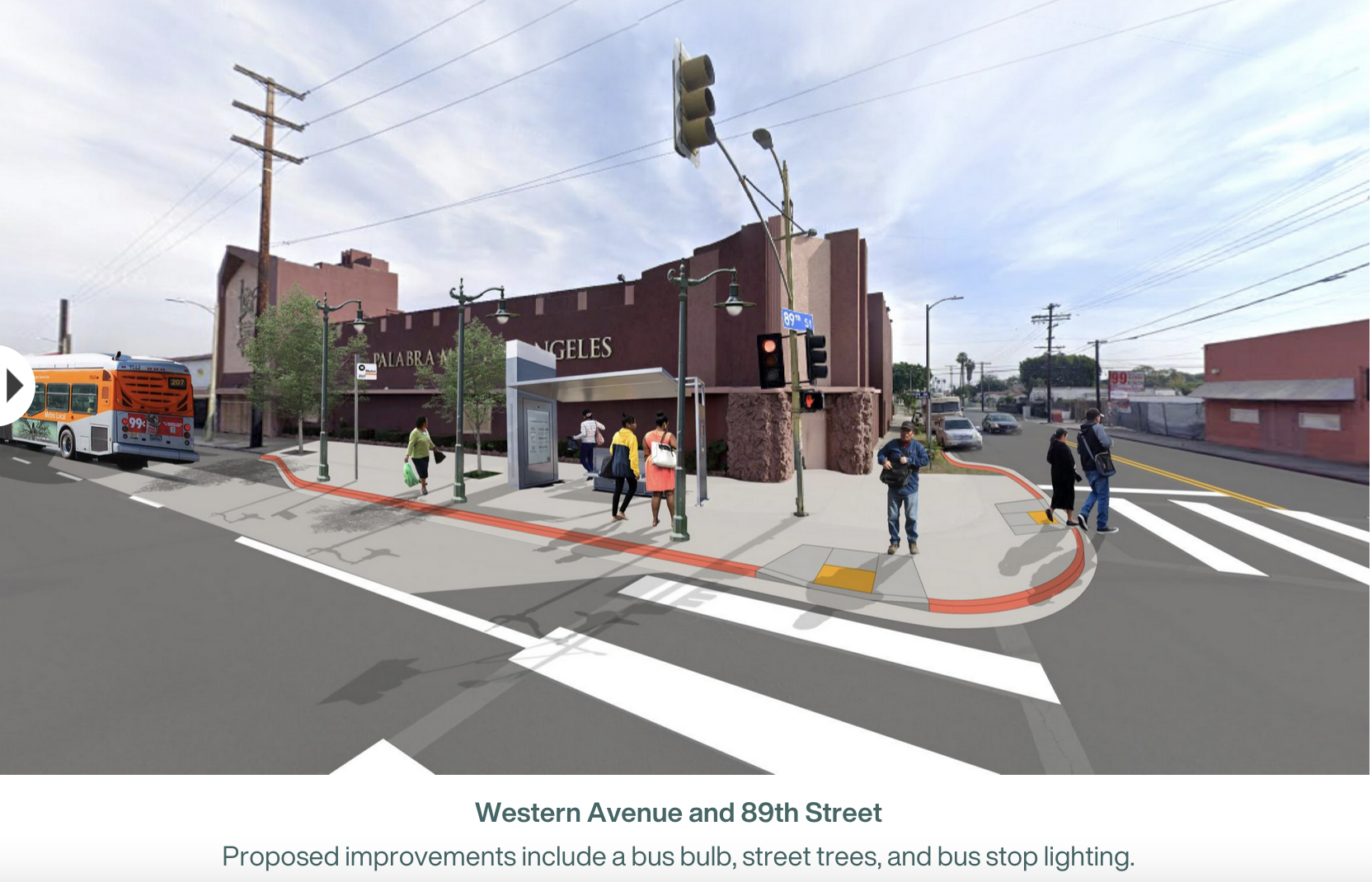The main purpose of Wednesday night's meeting on the Western Our Way (WOW) project, hosted by representatives of the Bureau of Street Services (Streets L.A.) and Eighth District Councilmember Marqueece Harris-Dawson's office, was to encourage residents and business owners to take a two-question survey on pedestrian lighting options for the Western corridor between Martin Luther King, Jr. and Century Boulevards.
The very brief survey, which closes on December 27, asks stakeholders to choose between the Spider pole (left), which can already be found on Western between King and Exposition Blvds., and the King Coachman (right), and to tell Streets L.A. whether they prefer the poles be green or black.
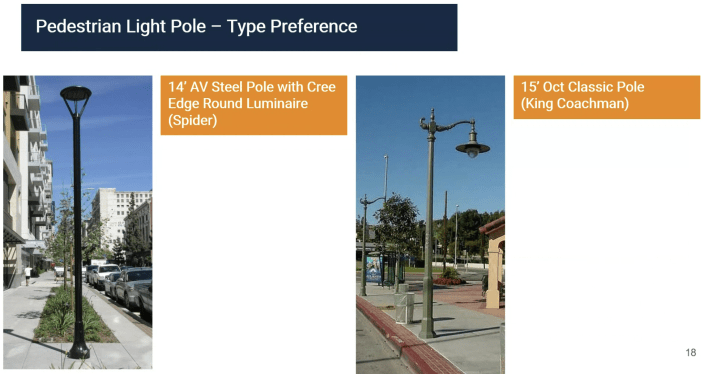
The new light poles are one of many ways the $47.7 million WOW project is expected to transform the long-neglected corridor in the coming years.
With the help of the $37.74 million ATP grant awarded last December, the street will eventually see new and upgraded crosswalks, more traffic signals, pedestrian beacons, tightened intersections, concrete medians, and other treatments. All of which should make for a much safer and more welcoming environment for pedestrians, cyclists, transit users, and drivers alike.
Although major construction is not expected to begin until the fall of 2026, the hosts indicated that getting consensus on the light pole design from stakeholders will allow them to move forward on the lengthy process of getting buy-in on the lighting element from property owners along the corridor.
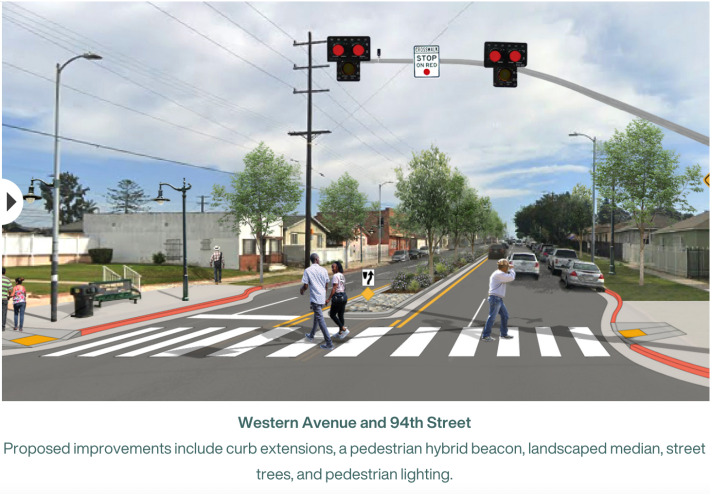
Participants were pleased to learn about the plan to improve lighting along the corridor. But they were also looking for more. Poor lighting combined with the number of darkened store fronts along the avenue have contributed to some of the more deeply entrenched problems found along certain sections. Several asked for streetscape improvements to be paired with assistance to small businesses (e.g. for facade improvements) so that enhancements to the street were more sustainable as well as truly transformative for the people in the community, not just those passing through.
Participants also asked about other planned safety improvements. The corridor is one of the city's more dangerous speedways; just last month, a violent Thanksgiving Day crash near a bus stop at 83rd and Western killed a mother and her 8-year-old daughter. Participants named a number of intersections where they hoped to see significant interventions to enhance pedestrian safety and curb street racing and takeovers, red light running, speeding, unsafe turns, and dangerous driving.

The city first turned its attention to Western in 2017, when it began re-imagining High Injury Priority Streets in South L.A. as part of the Vision Zero Initiative's effort to reduce traffic fatalities along the High Injury Network (the 6 percent of city streets - a total of 450 miles - that account for 70 percent of deaths and severe injuries for pedestrians).
The original plans presented by the department of transportation (LADOT) included the possibility of a number of interventions, including tighter intersections, pedestrian safety beacons, and much more. Unfortunately, that same year, the uproar over a road diet on the Westside and the subsequent (failed) effort to recall then-Councilmember Mike Bonin had a chilling effect on the city's more ambitious ambitions. At a community meeting called by Harris-Dawson to discuss the rash of crashes that had claimed the lives of 19 pedestrians and cyclists in July of 2018, the maps and boards up around the room indicated LADOT was now shying away from traffic calming infrastructure and redirecting its energy toward selling left-turn pockets as a safety advancement.
During Wednesday's meeting, participants referenced their disappointment with the minimal quick-build interventions that had cropped up around the community during that period. Several felt the plastic posts and paddles were more confusing than helpful. They wanted tangible and permanent change - concrete and landscaped medians and curb extensions - and they wanted the city to promise not to allow them to fall into disrepair.
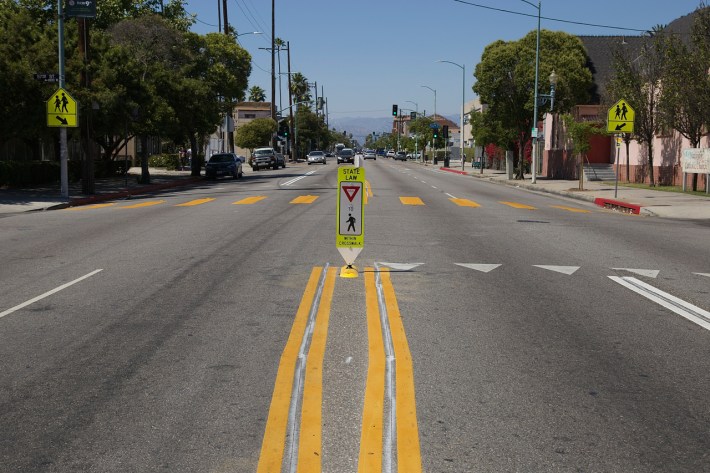
Staff from Streets L.A. and the councilmember's office reassured participants that concrete interventions and their upkeep were both a priority.
At present, there are plans for where landscaped medians and other facilities will likely go, but Streets L.A. looks to do more community engagement in the new year before they are finalized. Formal engagement workshops are planned for February, May, and July of 2024. Staff said other efforts will be made to attend neighborhood council and other community meetings and events to ensure a wide range of stakeholder views are incorporated into the final plans.
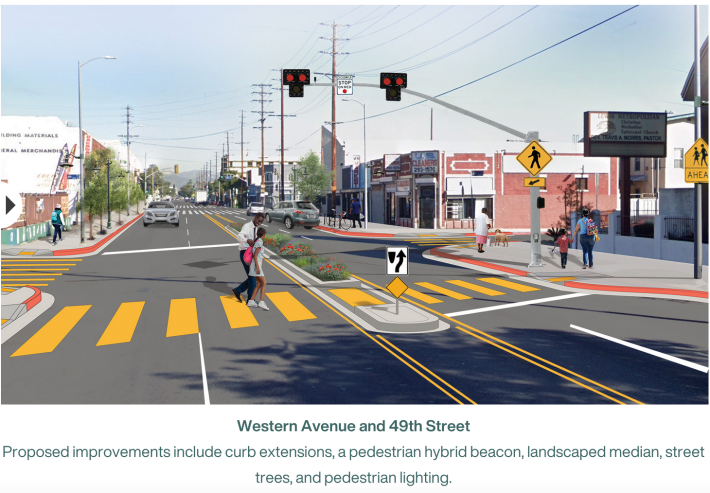
Streets L.A. encourages corridor stakeholders to take the light pole survey by December 27 and pass it on to others in the community.
For more about the project, visit the Western Our Way page here.

